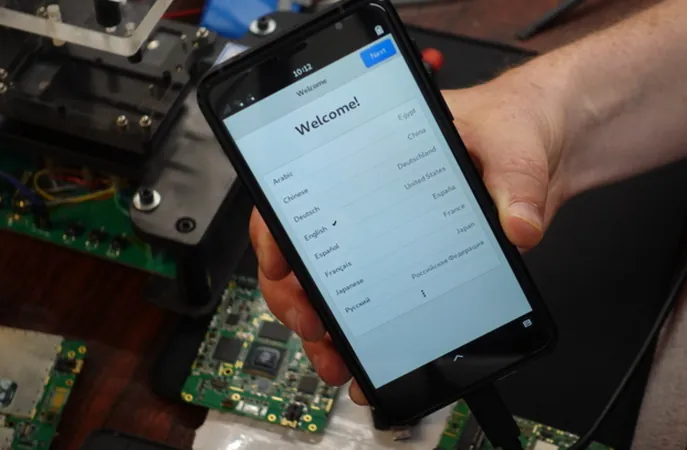
The $2,000 Liberty Phone: America’s Bold Leap into Smartphone Manufacturing
2025-04-10
Author: Lok
The Quest for a Truly American-Made Phone
In a tech landscape often dominated by overseas manufacturing, the dream of a smartphone made entirely in the USA sounds more like a fantasy than reality. But one innovative company, Purism, is challenging this notion with its new Liberty Phone, priced at a staggering $2,000. This bold venture not only highlights the complexities of global supply chains but also raises questions about what it truly means to be 'Made in the USA.'
Introducing the Liberty Phone
The Liberty Phone is a variant of Purism’s Librem 5 device, previously manufactured with components sourced largely from international suppliers. The typical Librem 5 costs around $800 and, while functional, features specifications that some critics deem outdated. However, the Liberty Phone is built with a commitment to sourcing and manufacturing as many components as possible within the United States, which itself is a daunting task.
An Interview with Purism's Visionary
To get a deeper understanding, I reached out to Purism’s founder, Todd Weaver, who has been at the helm since 2014. Determined to create a vibrant U.S. manufacturing scene, Todd emphasized the importance of a secure supply chain and transparency in producing technologically advanced devices. His journey started with laptops before transitioning to smartphones, which proved to be an intricate challenge.
From Vision to Reality: The Manufacturing Process
Purism’s manufacturing process is groundbreaking. Instead of simply assembling imported products, they’ve created a vertically integrated process. Todd explains that they source components, such as resistors and capacitors, predominantly from Western suppliers. Their entire electronic assembly takes place in Carlsbad, California, where they produce the printed circuit boards from scratch.
Navigating Component Challenges
However, the road to U.S. manufacturing isn’t without hurdles. While many components can be sourced from American or Western manufacturers, certain crucial parts, such as specialized crystals used for timing, are still reliant on overseas suppliers. This highlights the ongoing difficulty in achieving 100% domestic production.
Balancing Cost and Quality
The Liberty Phone's high price tag reveals the economic implications of U.S. manufacturing. With production costs reaching approximately $650, the decision to sell it for $2,000 includes factors like rigorous quality assurance processes and enhanced security features. Unlike cheaper alternatives, the Liberty Phone targets a niche market—consumers who prioritize privacy and transparency.
The Future of U.S. Manufacturing
Weaver envisions a future where American manufacturing is not only feasible but thriving. However, acquiring skilled labor in the U.S. remains a challenge. With fewer trained electronics engineers compared to regions like Shenzhen, any rapid scaling of U.S. manufacturing could strain available resources. The journey toward self-sufficiency may be slower than anticipated.
Final Thoughts on American-Made Tech
The Liberty Phone exemplifies a small but significant step toward revitalizing manufacturing in the United States. While it may be one phone at a time, the moral of the story emphasizes the potential of American ingenuity. As tariffs and global trade dynamics evolve, the future of tech might just depend on innovative companies like Purism willing to lead the charge.

 Brasil (PT)
Brasil (PT)
 Canada (EN)
Canada (EN)
 Chile (ES)
Chile (ES)
 Česko (CS)
Česko (CS)
 대한민국 (KO)
대한민국 (KO)
 España (ES)
España (ES)
 France (FR)
France (FR)
 Hong Kong (EN)
Hong Kong (EN)
 Italia (IT)
Italia (IT)
 日本 (JA)
日本 (JA)
 Magyarország (HU)
Magyarország (HU)
 Norge (NO)
Norge (NO)
 Polska (PL)
Polska (PL)
 Schweiz (DE)
Schweiz (DE)
 Singapore (EN)
Singapore (EN)
 Sverige (SV)
Sverige (SV)
 Suomi (FI)
Suomi (FI)
 Türkiye (TR)
Türkiye (TR)
 الإمارات العربية المتحدة (AR)
الإمارات العربية المتحدة (AR)